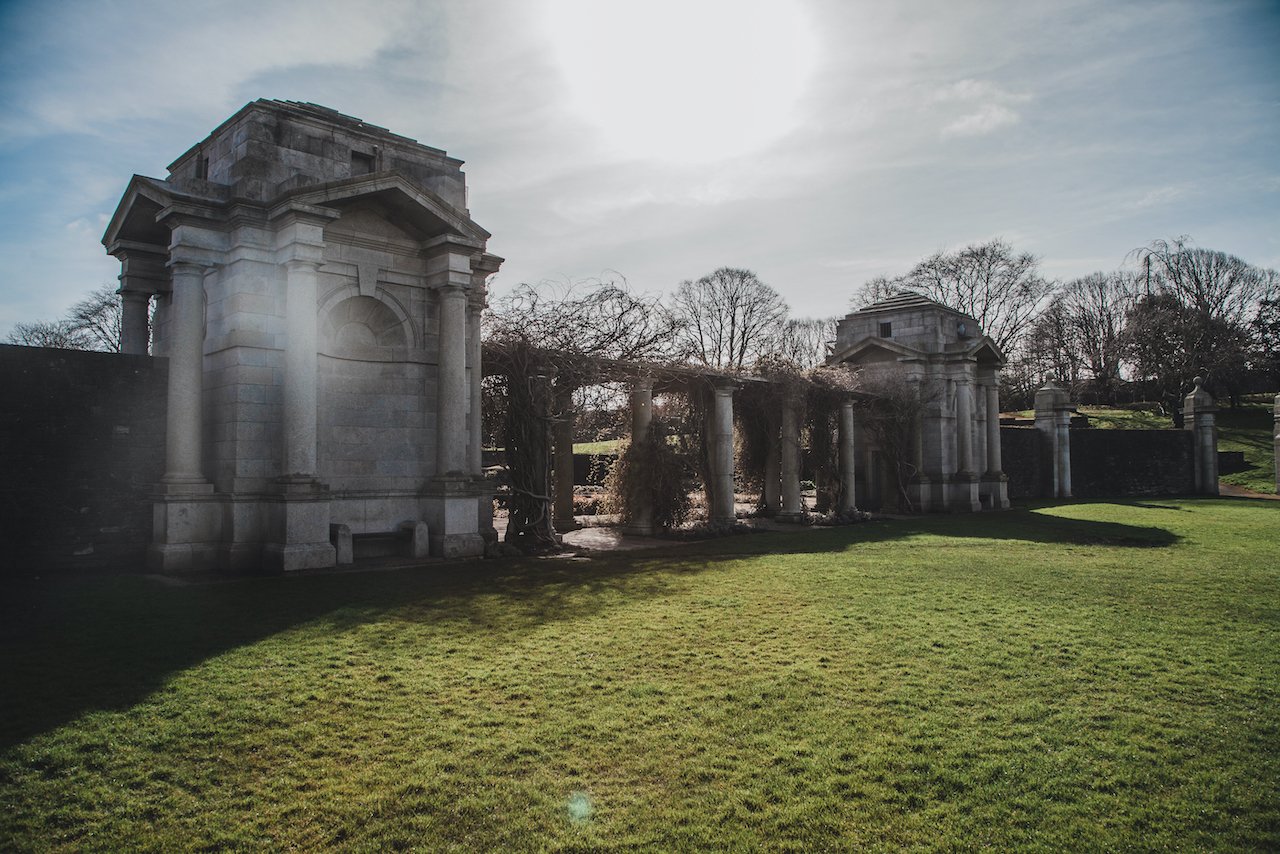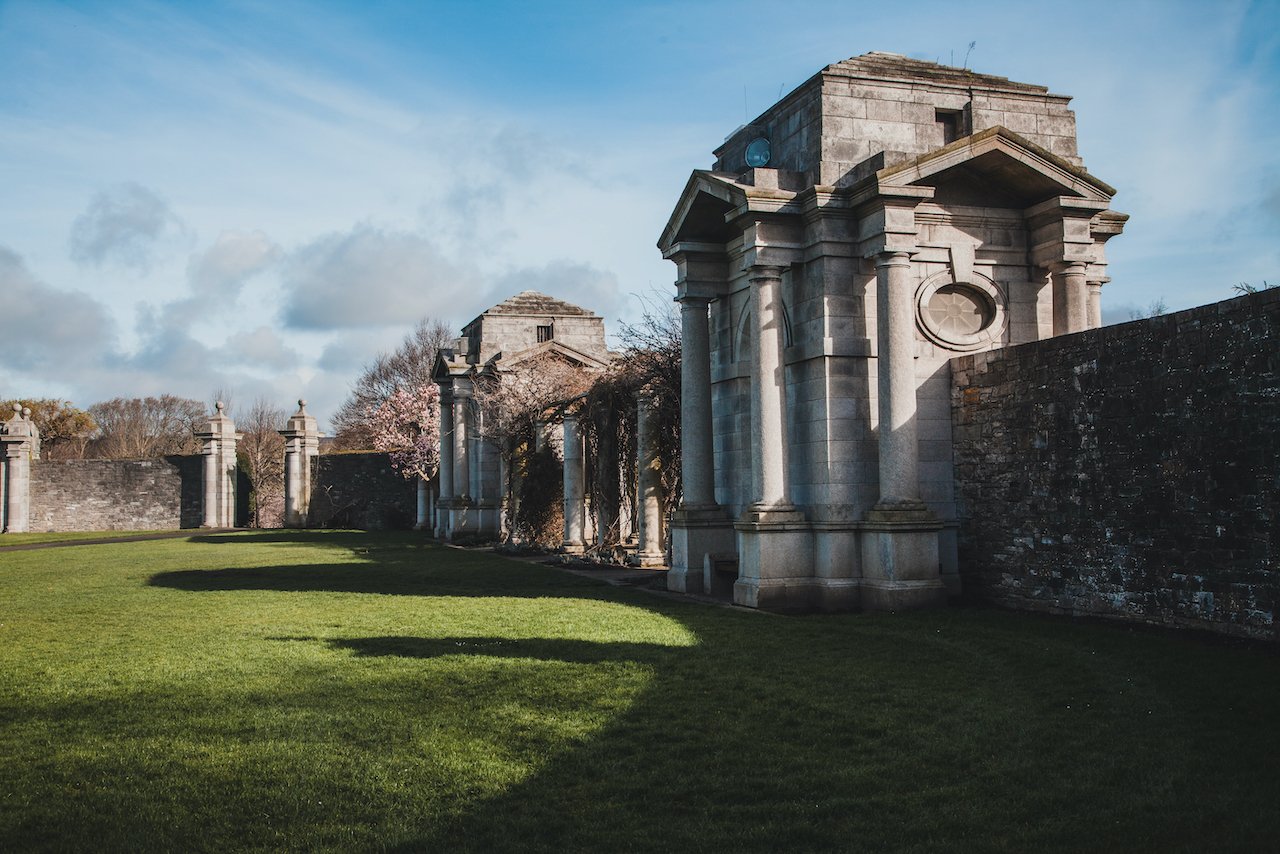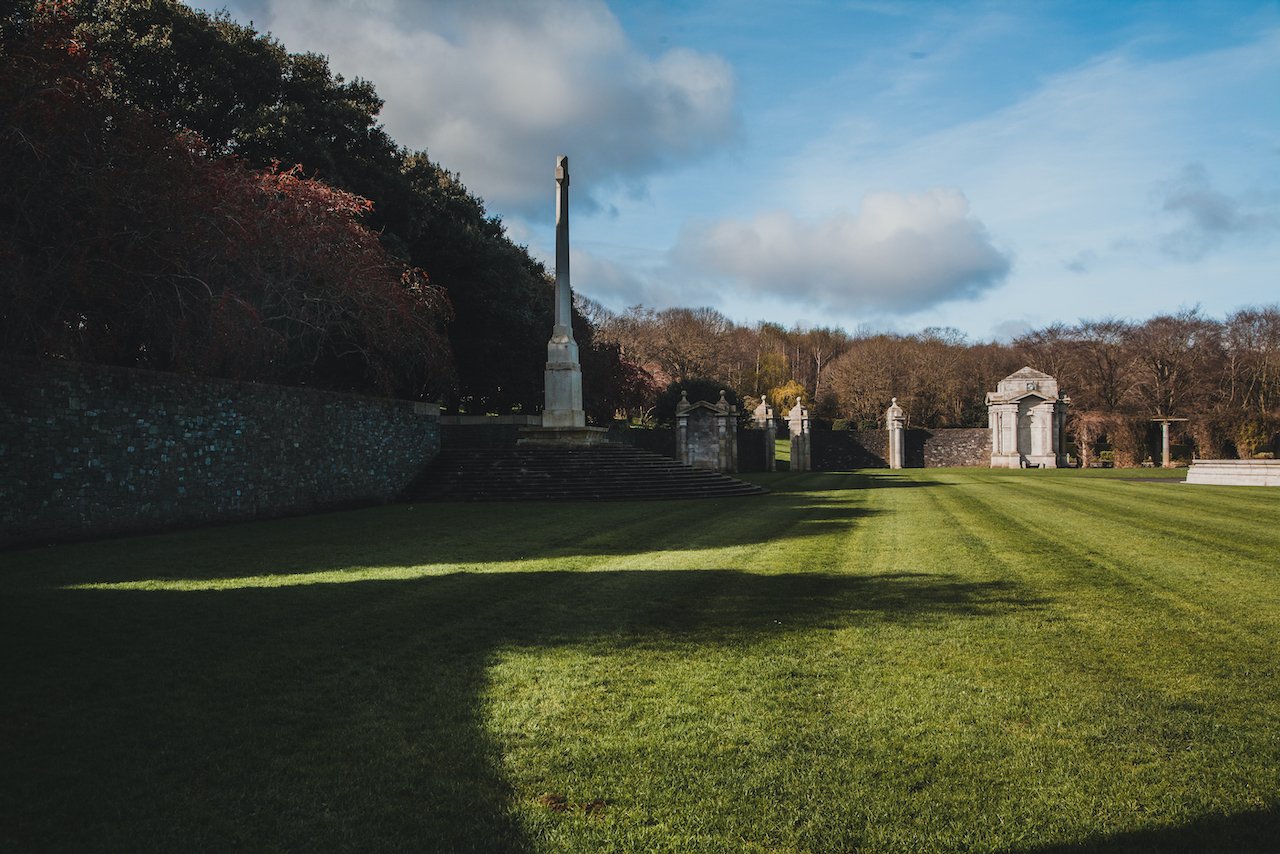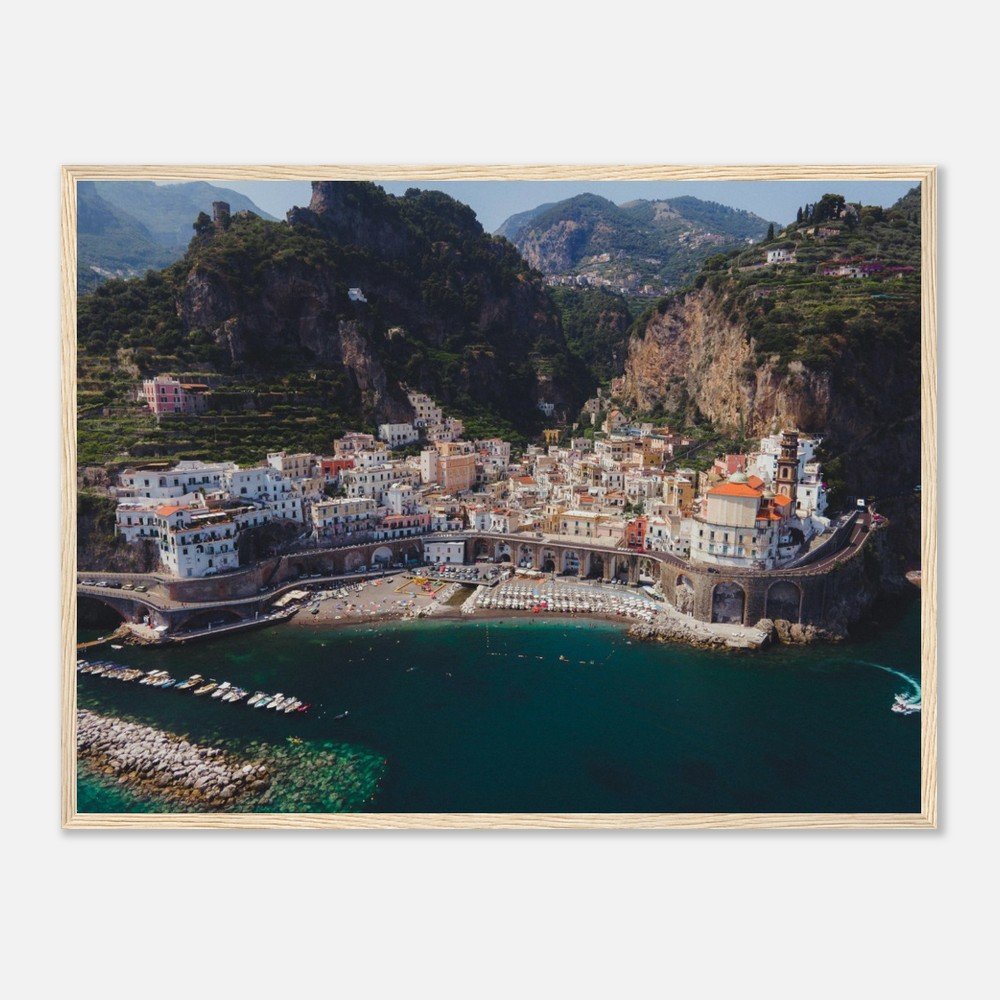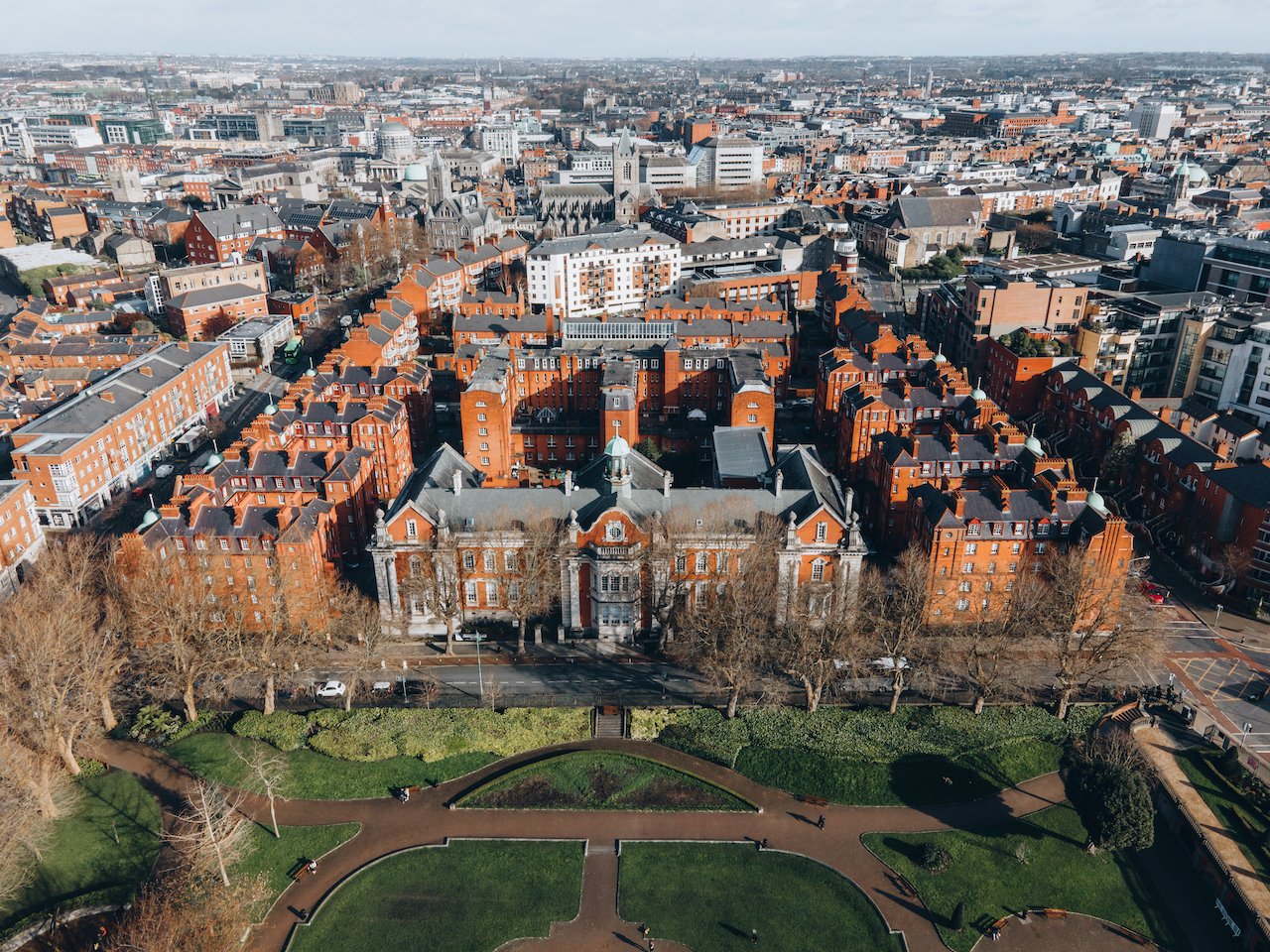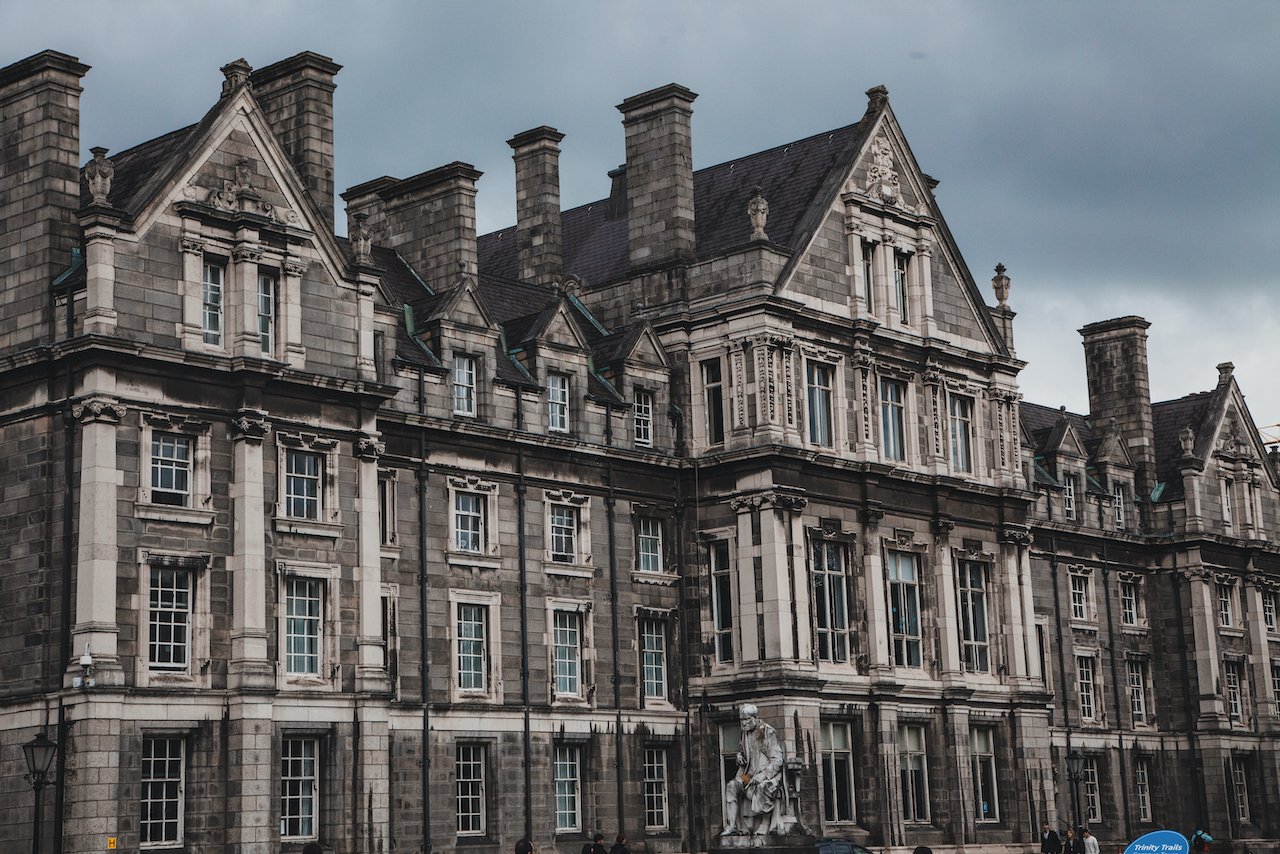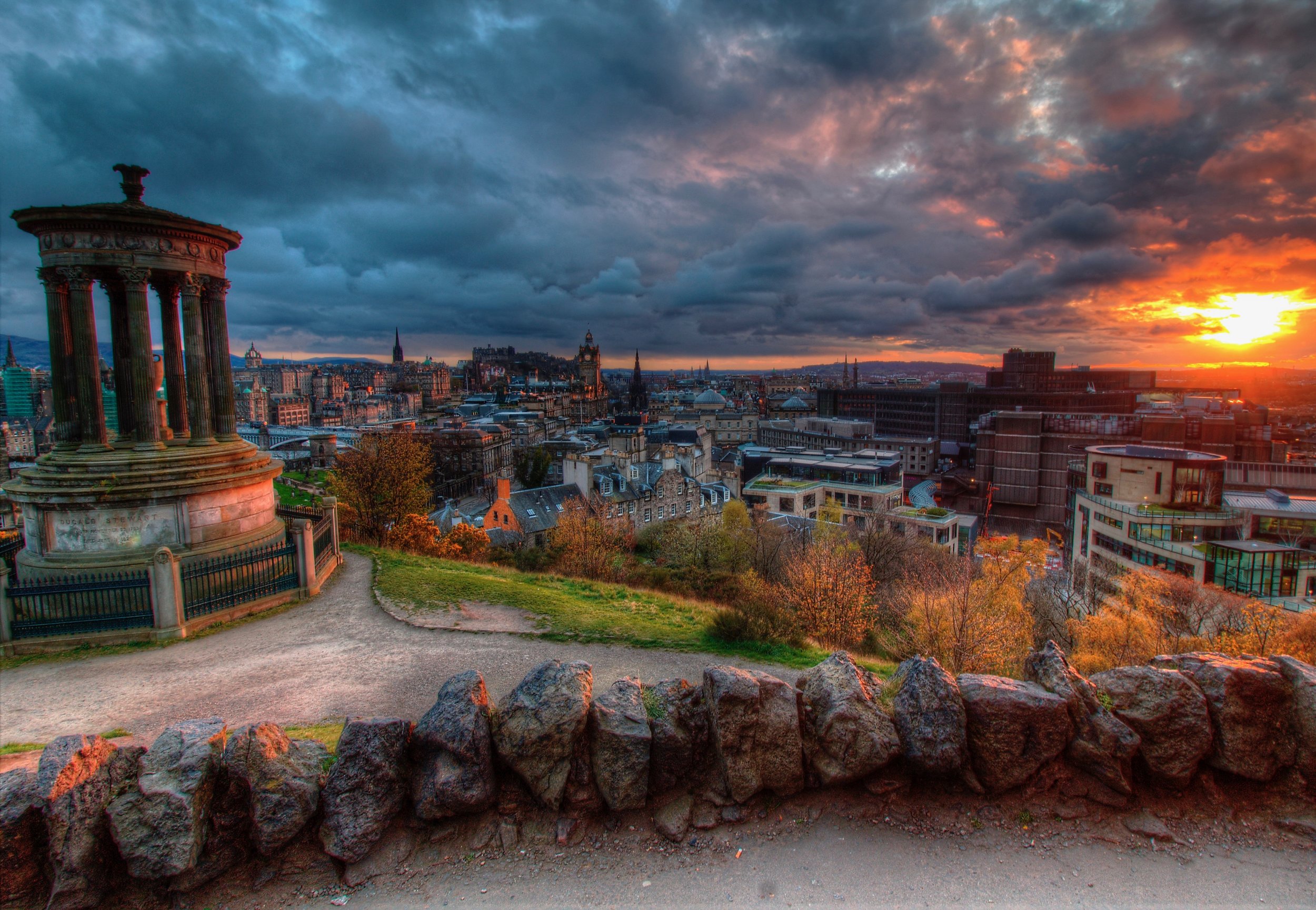Exploring the Irish capital city of Dublin
(Some links in this post are affiliate links. If you click through and take action, I'll be compensated.) If you are also interested in any PRINTS from any of my posts, be sure to check out my store where you can buy prints as posters, in metal/wooden frames or on canvas.
Being the capital city of Ireland, it is of course the largest as well with a population of 1.5 million in Dublin county, which accounts for about 30% of the total Irish population. Dublin sits on the eastern coastline of Ireland with the River Liffey dividing the city into two parts.
The located of Dublin, and Ireland as a whole, has made it a hotspot of conquering activity. The Gaels established their presence in the 7th century, followed by the Vikings, then followed by the Anglo-Norman invasion in the 12th century. It was only until 1922 that Ireland became independent with Dublin as its capital.
Dublin in my adult life has come to be quite a popular destination for travelers, especially Americans. I imagine this to be because of how friendly the Irish are, the accessibility of Ireland by plane, and the slightly closer proximity it is to the US compared to other places in Europe.
The city is replete with historical sites, including old cathedrals and castle remnants, along with famous breweries of drinks people have come to enjoy. My time here was for just a few days, which left me very satisfied that I have left no stone unturned in seeing what the city is all about.
I also managed to carve out some time to check out Galway during my Ireland trip. If you want to read more about my time in Galway, check out my blog post.
Check out my drone video of Dublin, Ireland below!
How to get to Dublin
You can access Dublin by flying directly into Dublin Airport (Airport code: DUB), which is located just north of the city center. Since it is the largest airport in Ireland, you will find that it is serviced by many airline providers.
To get into the city center of Dublin, there are a few options you can take:
Taxi - You can find taxis outside both Terminals 1 and 2. The journey will cost you around €25-€30.
Bus - There are many bus providers in Dublin, most of which are listed here:
Dublin Express - 782, 784
Aircoach - 700, 702, 703
Dublin Bus - 16, 41
Go Ahead - 33a, 102
Airport Hopper - 767, 777
Dublin Coach - 750
Unfortunately, the buses only take cash payments and not any payment by card. What I did instead was I bought a 24 Hour LeapCard, which allowed me unlimited bus service for an entire day. You can purchase one at many of the convenience shops on the airport premises. The LeapCard allows you to travel using Dublin City Bus services (operated by Dublin Bus and Go-Ahead Ireland), Luas (tram), DART and Commuter Rail in the Dublin area.
A ‘Leap Visitor Card’ can be purchased to last for 1, 3 or 7 days. The prices are as follows:
24 hours – €8.00
72 hours – €16.00
7 days – €32.00
To activate it, you just hold it up to the LeapCard scanner upon entering any bus and wait for a beep. It is at that point that the card is activated, starting the timer on your unlimited journeys. You can also buy a LeapCard that you must occasionally top up as well. I took Dublin Bus number 16, which took about 45 minutes to get to Dublin city center, using my LeapCard in the process.
If you like some of my photos that you have come across, just know that I have many prints showcasing a variety of landscapes available for purchase below! (Sold as Posters, Canvas, or in Metal-Frames and Wooden-Frames).
Here are some of the places worth seeing while you’re in Dublin:
The Spire
The Spire of Dublin, otherwise known as the Monument of Light is what welcomed me to the city center from my journey from the airport. The spire is a massive spike monument, made of stainless steel, sitting 120 meters high. You can find it on O’Connell Street, one of the main streets of Dublin. For those Star Wars fans out there, when A Force Awakens was released, the Spire was turned into a lightsaber.
The Custom House
The Custom House is located on the North side of the River Liffey. It is a government building, home to the Department of Housing, Local Government, and Heritage. Perhaps what is most known about it is its gorgeous facade with architectural features of a neoclassical 18th century style. It is an icon in Dublin.
Dublin Castle
Dublin Castle is a present day government and conference center in the center of Dublin. The castle has roots to the 12th century, in the days of the first Lord of Ireland, King John. The buildings around the complex are mostly from the 18th century. The castle was originally built closer to the River Liffey, but as the river narrowed somewhat over the centuries, the building is now located a few blocks away. It is not free to tour the castle and thus required a ticket for entry.
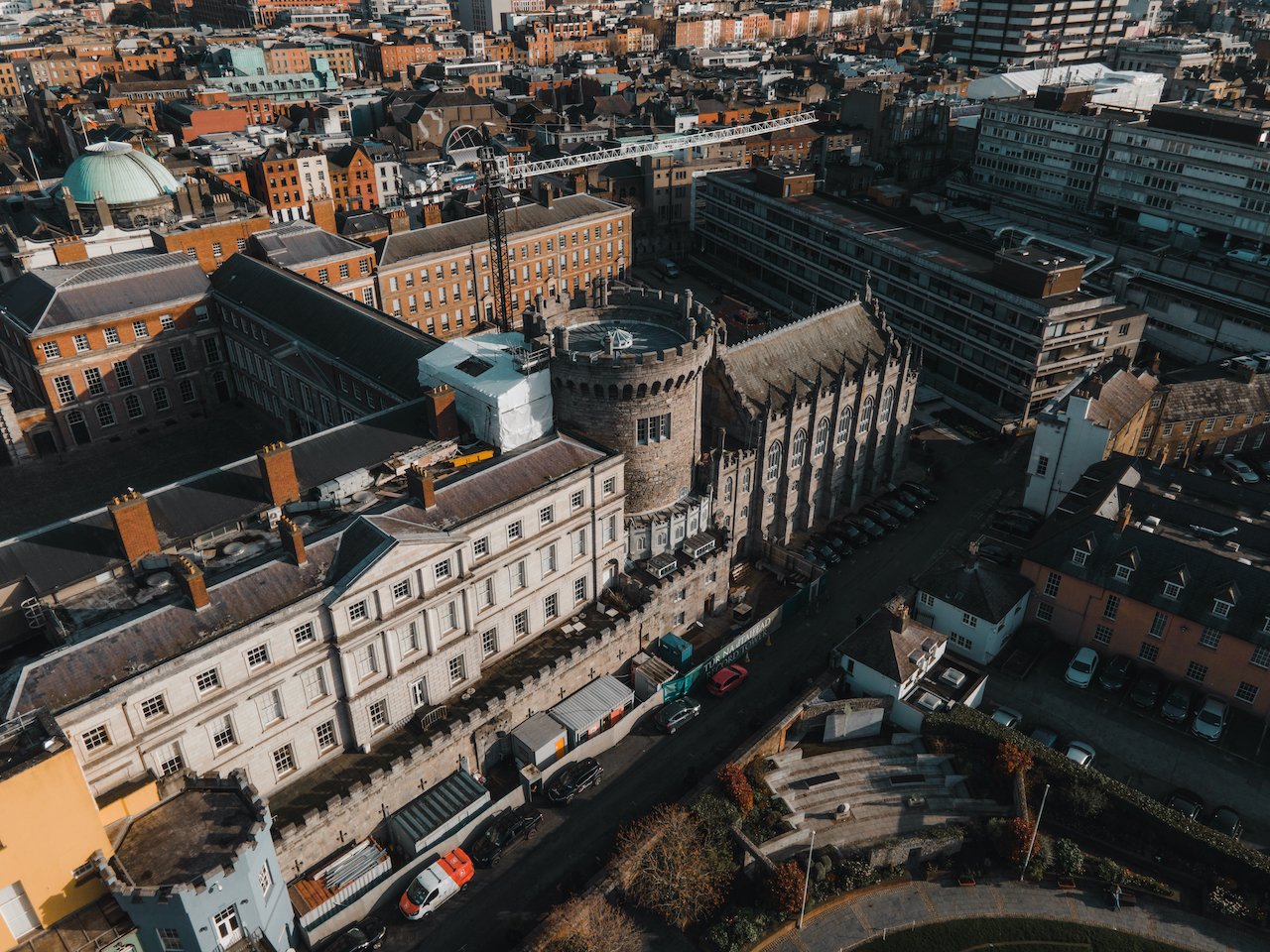

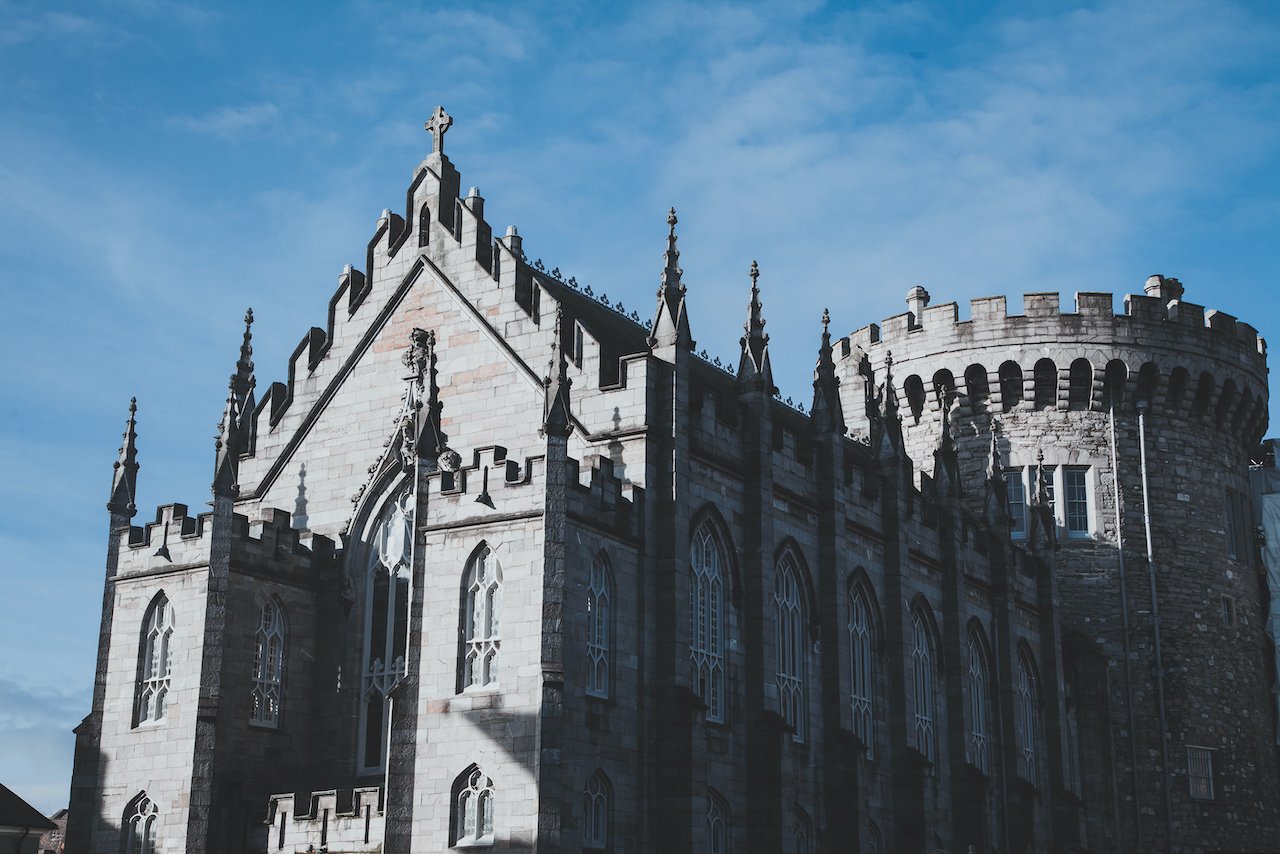
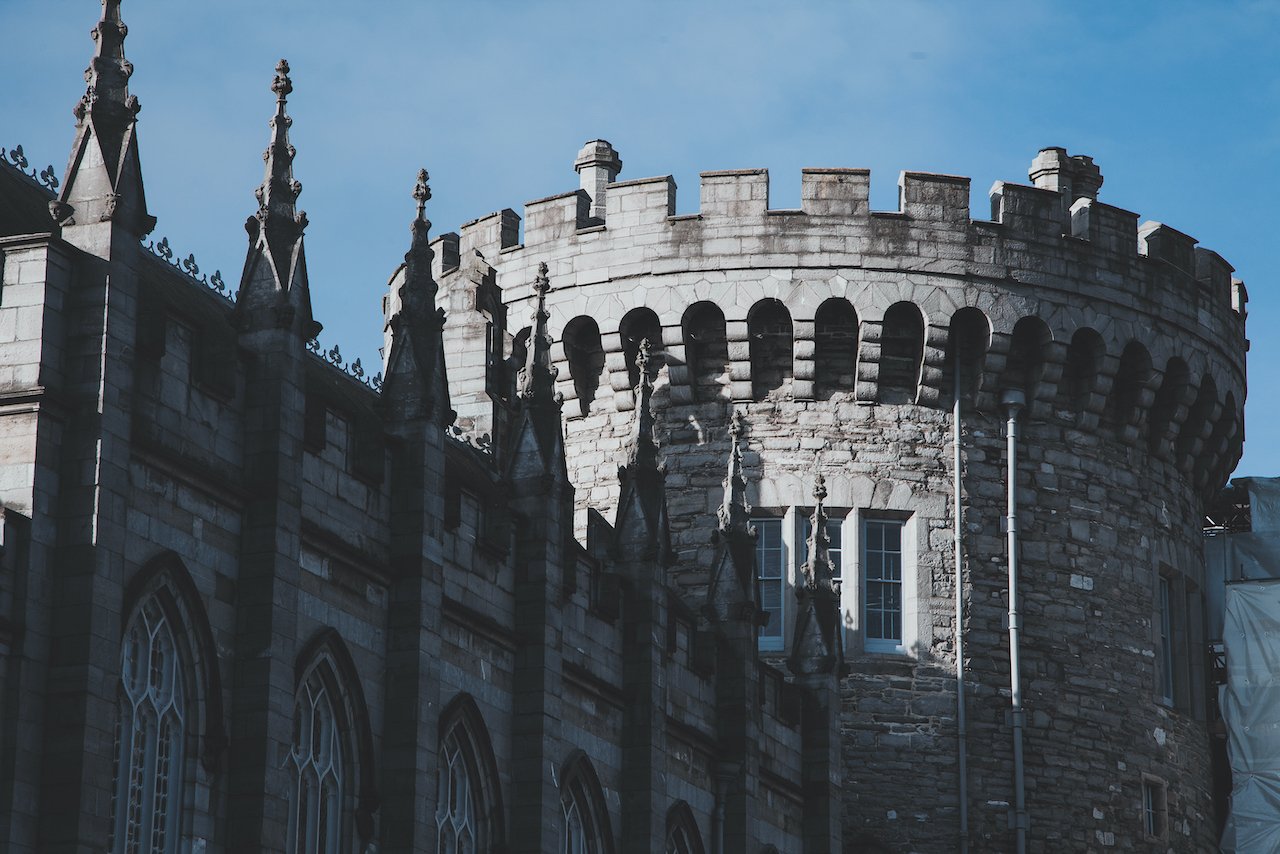
Guiness Brewery and Storehouse
You can’t come to Dublin without having a Guinness right from the source. The Guinness Storehouse is located at St. James's Gate Brewery and opened in 2000. The attraction features interactive exhibits coupled with the storied history of the beverage along with its founder Arthur Guinness.
The complex spans seven floors and culminates with the Gravity Bar. This structure features a circular bar, giving you 360 degree view of all of Dublin. Luckily for you, your price of entry to the Guinness Storehouse also includes a pint of Guinness.
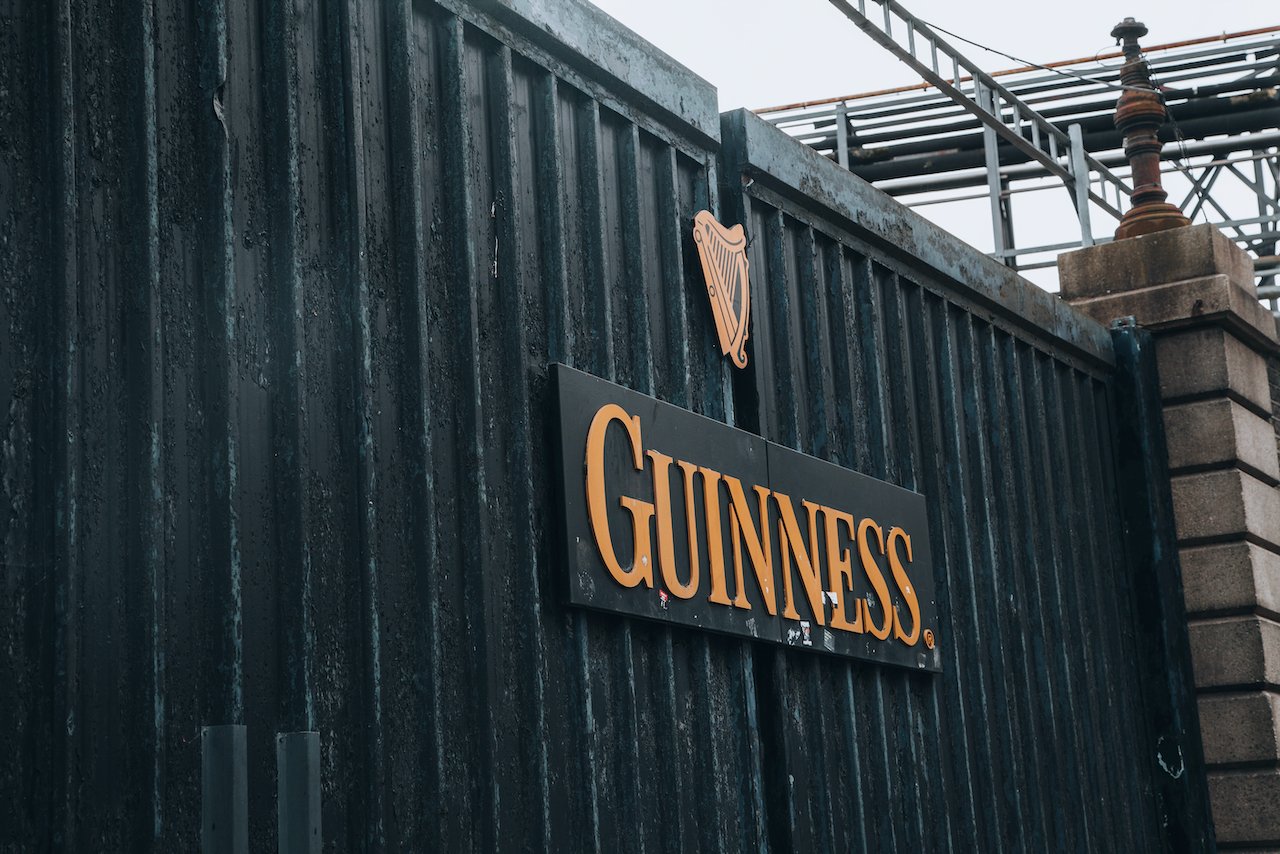
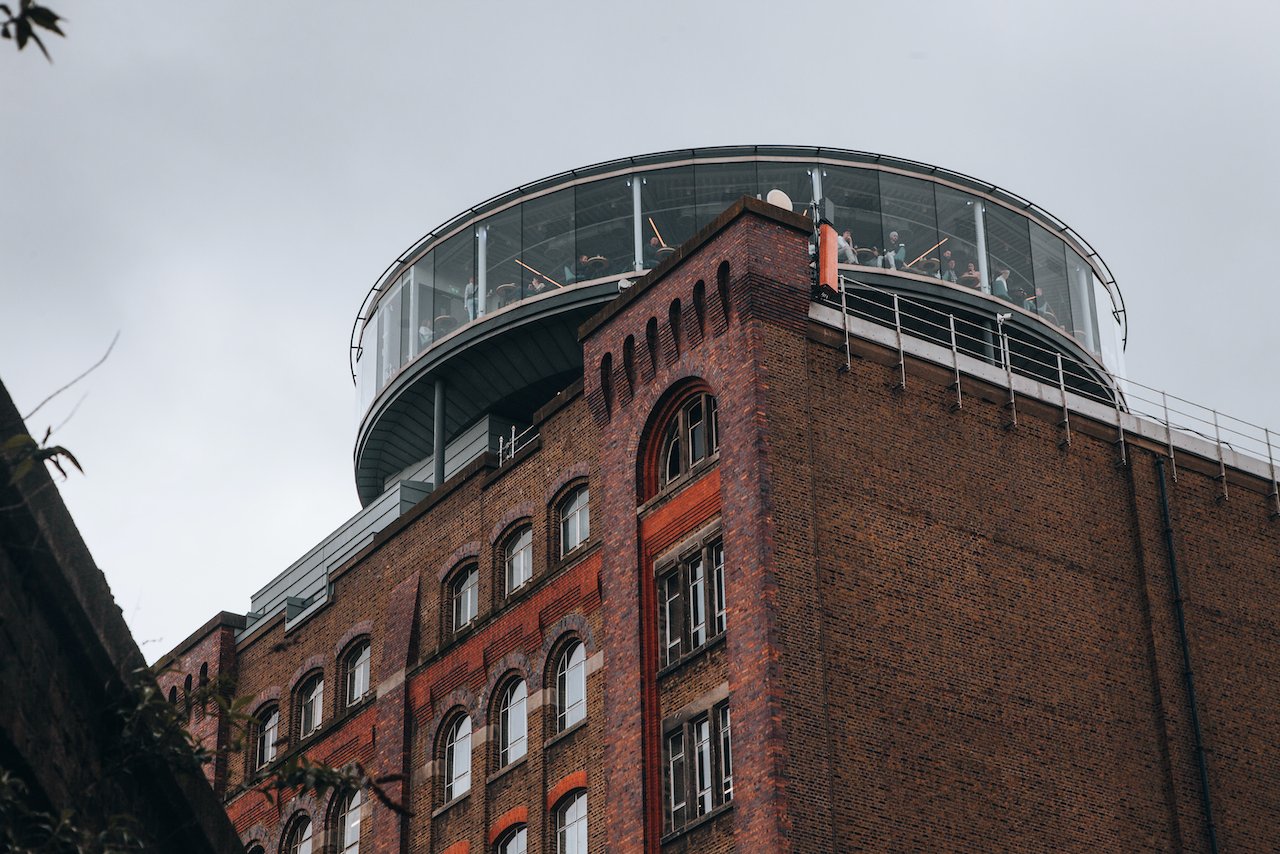
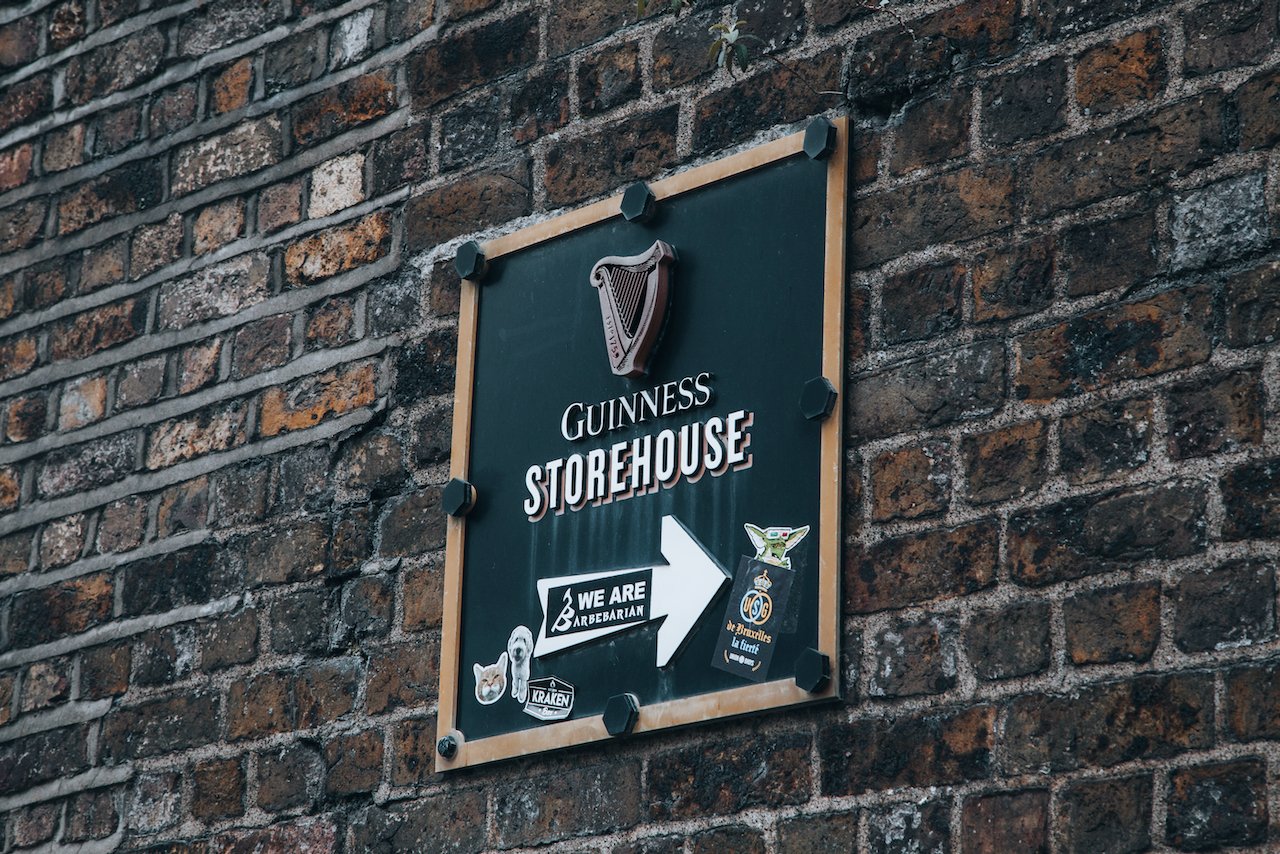
Jameson Distillery
For those who like whiskey more than beer, be sure to check out the Jameson Distillery Bow St., located just off Smithfield Square. The distillery is located at the original site of production up until 1971, whereby it is produced in another location present day. This location is a visitors center offering guided tours, a gift shop, and of course, whiskey tastings.
Ha’penny Bridge
You’ll inevitably need to transcend across the River Liffey using one of the many bridges of Dublin. The most famous landmark bridge has to be the Ha'penny Bridge, made of cast iron and built back in 1816. It is most recognizable from its white grid facade under the bridge walkway.
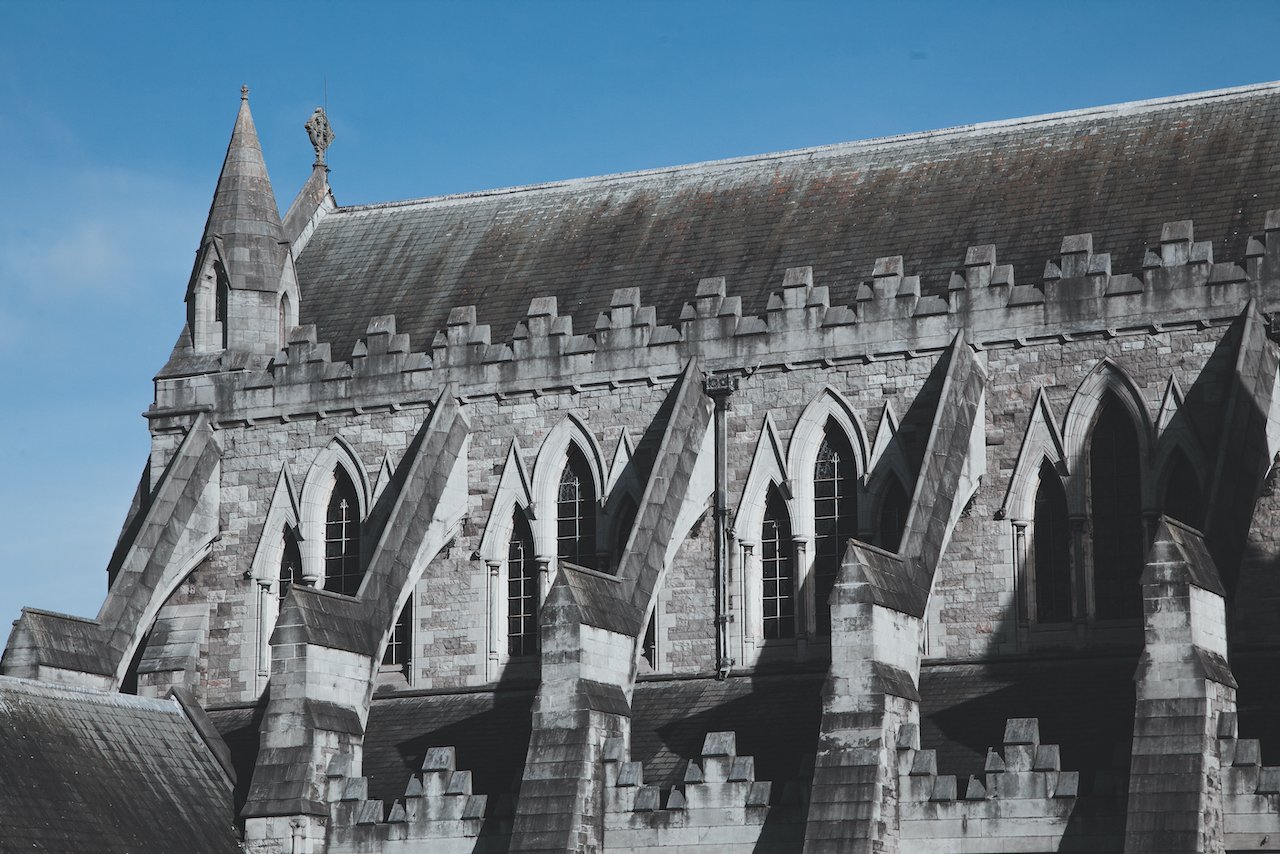
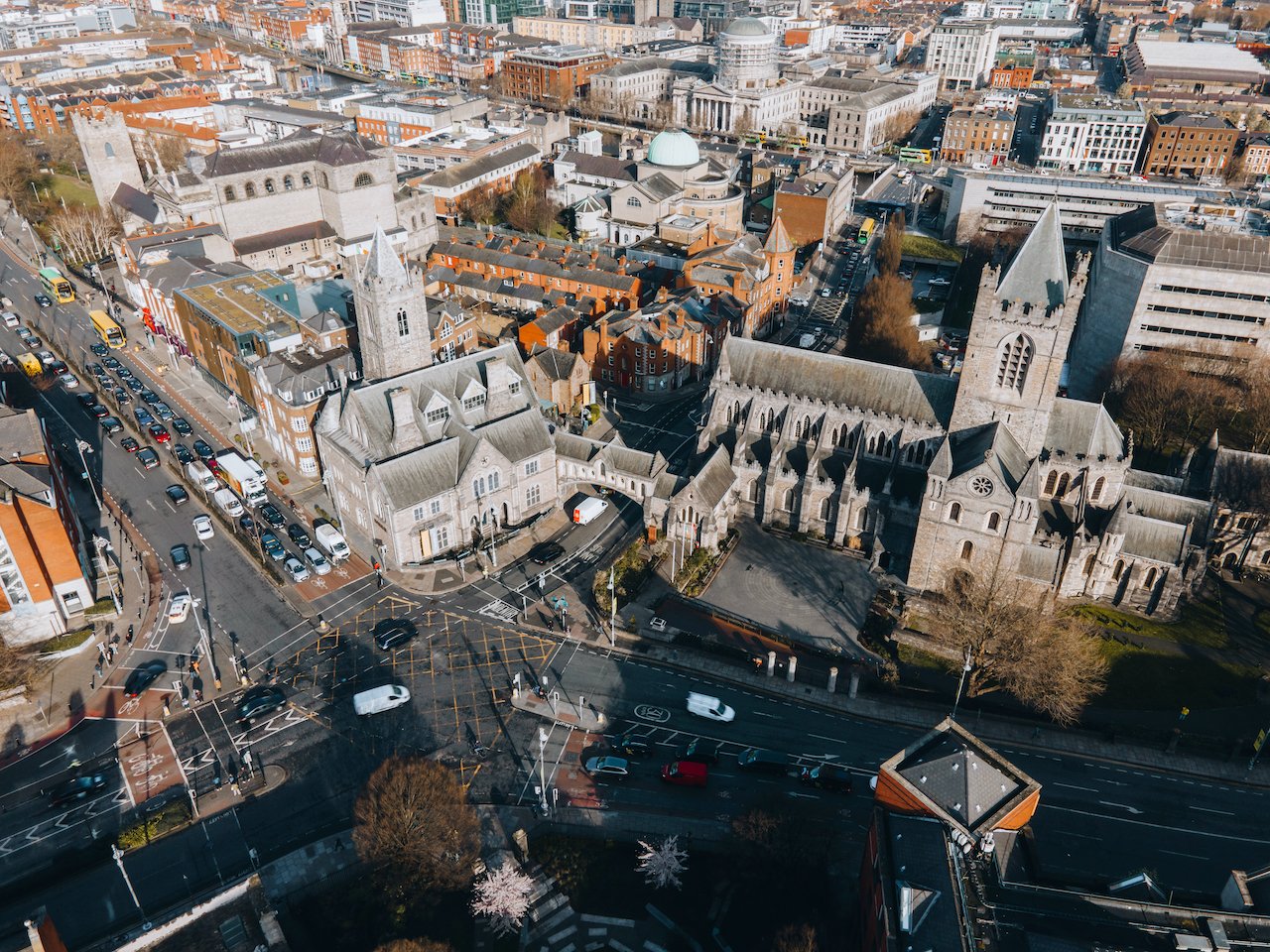
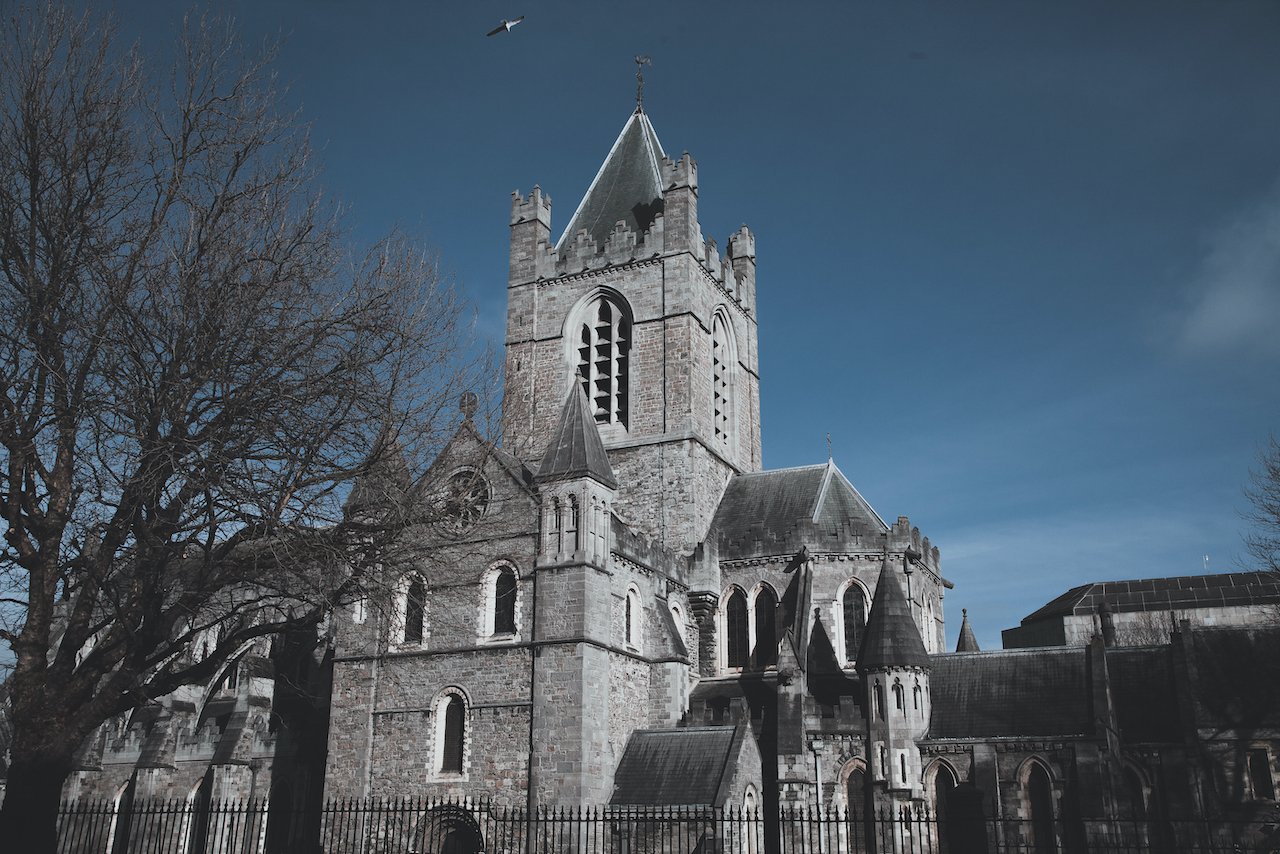
Christ Church Cathedral
The Christ Church Cathedral is the olderr of Dublin’s two medieval-era cathedrals, the other being St Patrick's Cathedral. The cathedral was founded way back in the 11th century, when Dublin was under Viking rule, specifically from the Viking King Sitric Silkenbeard (what a name!). Rebuilt in the 12th century under the Normans, it partially collapsed later on in the 16th century, before being renovated in the late 19th century.
A design feature I liked from this church that is different from most others is its covered footbridge, linking two buildings in the complex. Although this church is nice, my favorite happened to be the St. Patrick’s Cathedral.
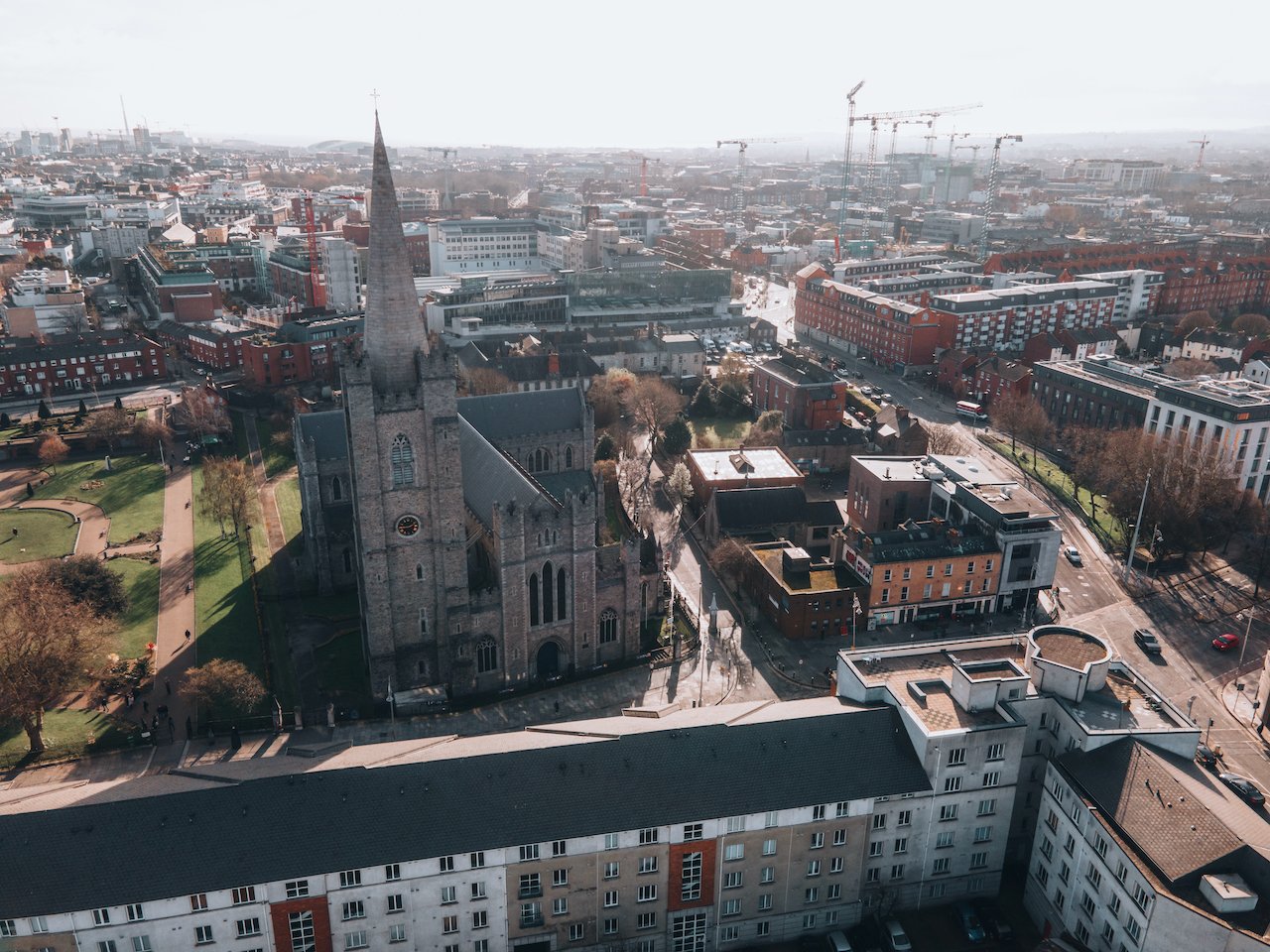
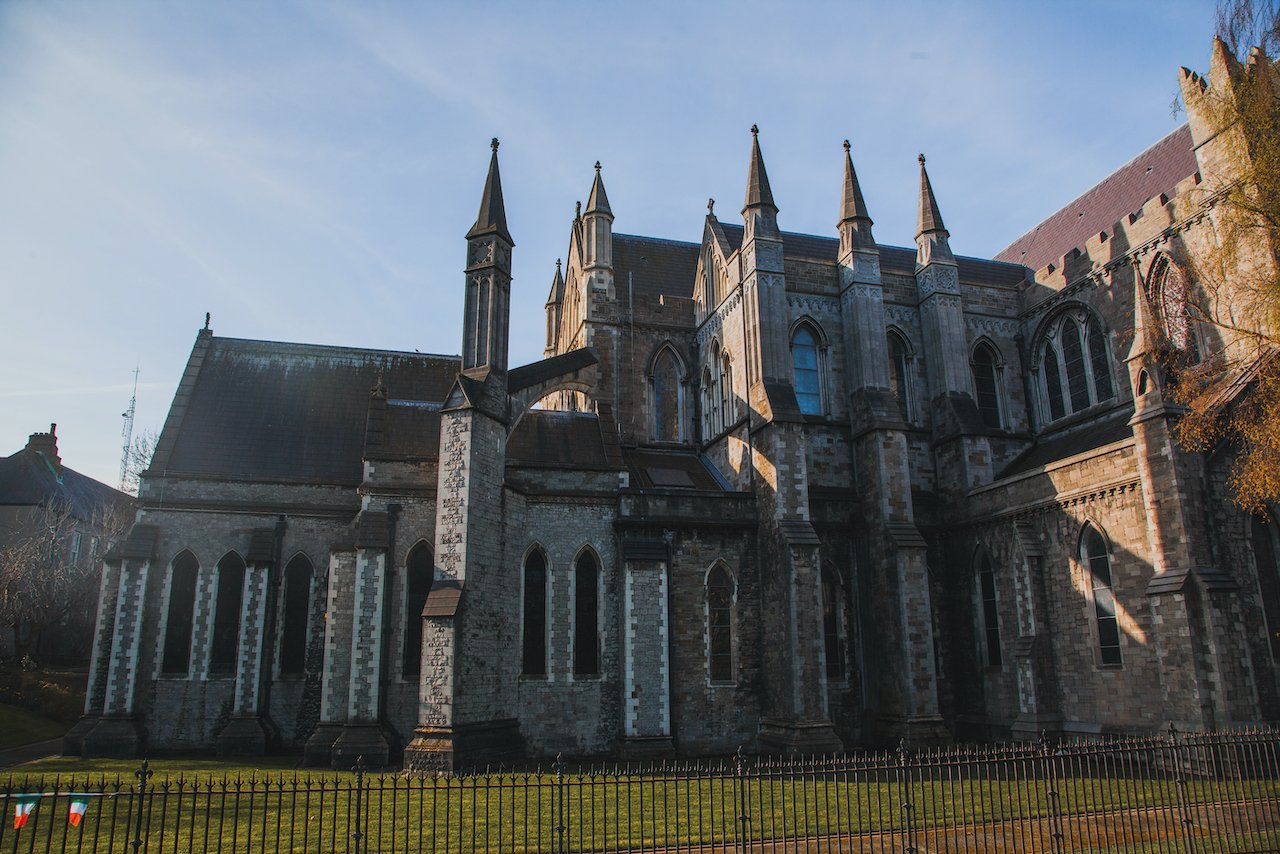
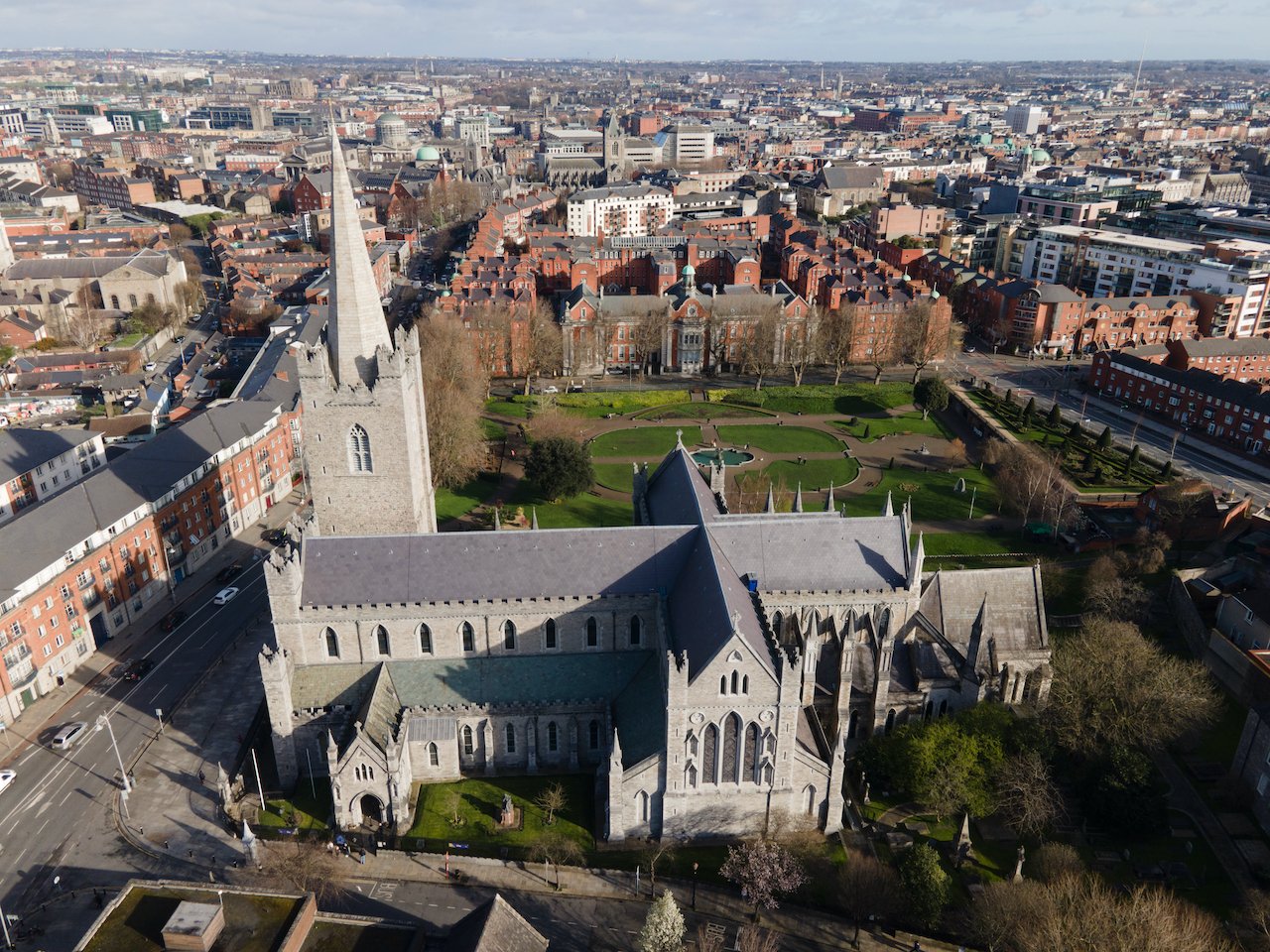
St. Patrick’s Cathedral
The Saint Patrick's Cathedral is the other medieval-era cathedral in Dublin, founded in 1191. It is a gorgeous site, with its immaculate looking grayish stone, covering its exterior. Next to it is a popular park, teaming with life from runners, children, students, and dog walkers.
Temple Bar
Temple Bar is a popular neighborhood located South of the River Liffey, containing numerous pubs lined along cobblestone streets. Here you will find many restaurants and clothing boutiques, peppered amidst all the bars. The actual Temple Bar itself is hard to miss with its black and red facade.
Grand Canal Dock
Grand Canal Dock is located in the Southside area Dublin just beyond Trinity College. It is a dock/harbor that provides access to the River Liffey. Development of the area has rejuvenated the environment and has made it a very enjoyable area of Dublin to experience and stay. Here you will also find several tech firm offices such as Google, Facebook, LinkedIn, X (Twitter), and Airbnb, giving it the unofficial nickname ‘Silicon Docks’.
Bord Gais Energy Theater
The Bord Gáis Energy Theatre is a performing arts venue located in the confines of the Grand Canal Dock. It is a fixed seat theater and features a large open air promenade, popular on warm spring days.
Great South Wall
The Great South Wall, also called the South Bull Wall is located at the Port of Dublin and features a lighthouse at its end. It is a wonderful place to walk along to get away from the busy noises of the city and to relax. It follows the River Liffey as it empties into the nearby bay. Just make sure you watch out for strong winds and hungry seagulls.
Trinity College (Book of Kells and the Long Room)
Trinity College Dublin is a university located in the city. It’s most notable feature (and there are many) happens to be its exhibit of the Book of Kells and the Trinity College Library. The Book of Kells is manuscript containing the Celtic Gospel in Latin. Another feature of the Trinity Library has to be the Long Room, it is aptly called. This room features two floors with tall wooden book shelves, stretching 100 meters, giving this endless illusion of books as far as the eye can see.
If you are a student or know a student enrolled in Trinity College, you can access the library for free, otherwise you have to purchase a ticket. Seeing as how the price for admission was around 20 Euros for an adult, I declined to see it given that I felt the monetary value was not worth parting with for what the exhibit offered. But have a go if you have the funds!
Phoenix Park
The Phoenix Park is a lush green space located west of the city center of Dublin. The Irish Government is trying to get UNESCO World Heritage Status for the site itself. It has been a site for recreational space and is home to many a herd of deer. It was definitely one of my more enjoyable parts of Dublin, since it was so much quieter, and the air felt much fresher.
